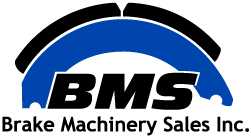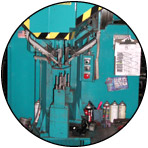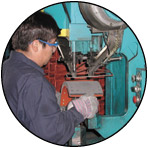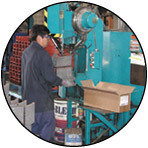
|
|
|
|
|
|
|
|
|
|
|
|
|
|
| |
|
|
|
|
|
Customer Support: |
![]()
BMS Riveter Machine
The BMS Riveter uses hydraulic pressure to compensate for variances of thickness in lining, brake shoes and rivets. Unlike mechanical riveters, BMS hydraulic riveters always produce consistent pressure and require no operator adjustments when changing to different brake shoes, lining, or rivets. BMS hydraulic riveters produce no loose linings.
Our studies have shown that, on average, operators rivet 450 shoes per shift, assuming a 7-hour workday. This speed is significantly faster than conventional mechanical riveter machines.
How do we achieve such a rate of productivity? We use two hydraulic riveting heads, one with a fixed position, and one that adjusts the distance between the heads. We start riveting the outside rows from one end of the shoe to the other. Then one riveting head repositions itself to the narrow rows of rivets and the operator completes the riveting of the brake shoe on the inside rows. Hydraulic movement between the heads quickly resets to accommodate spacing changes. Spacers for all popular brake shoes are included when you purchase one of our riveting machines.
In terms of cost reduction, we believe the most important features are: eliminating broken lining and adjustable rivet clinch pressure. Our hydraulic riveter provides the same pressure regardless of table thickness, brake lining counterbore depth or rivet length.
 |
|
|
| |
 |
|
|
| |
 |
|
|
| |
